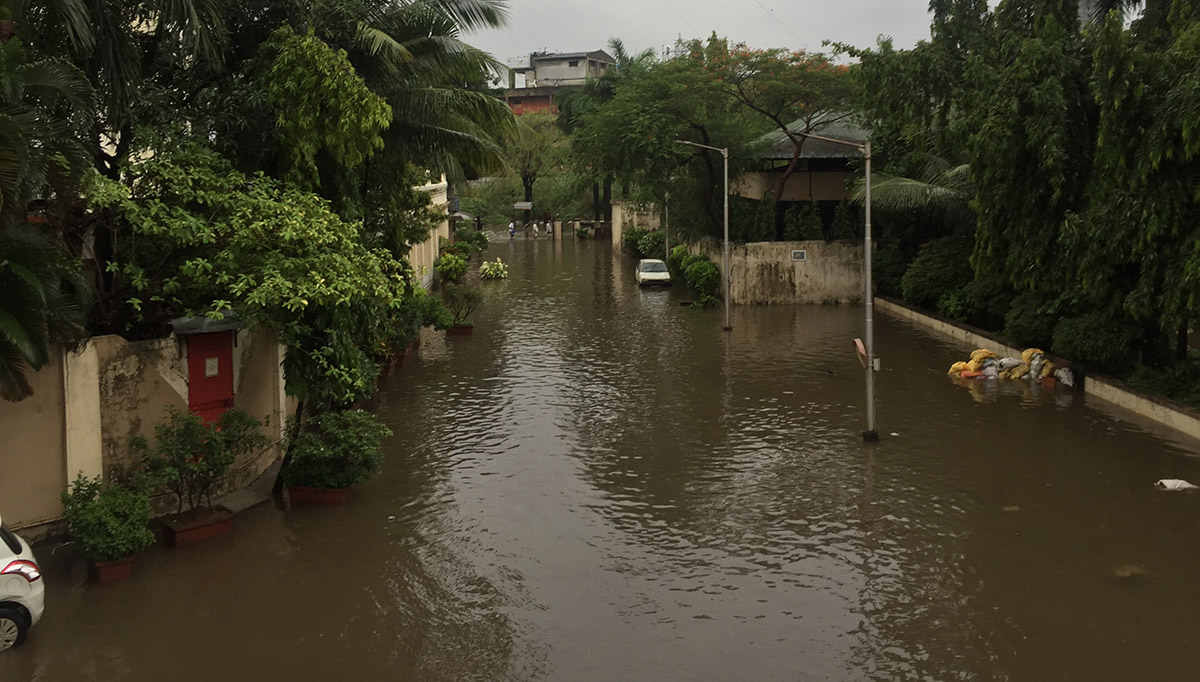Resilient infrastructure and finance systems require strong governance and integrated planning.

India reported the loss of over 80,000 lives and nearly $180 billion due to 400 extreme weather events between 1993 and 2022, experiencing devastating floods and severe heatwaves in recent years. During this period, the country recorded high absolute fatalities and economic losses, as well as a large number of people affected in both absolute and relative terms. Unplanned urban expansion continues to hinder sustainable growth and impede long-term development. Incidents of urban flash flooding have become frequent, even during minor rainfall, resulting in infrastructure damage and disruption of daily life, underscoring the lack of resilience in Indian cities.
Need for Built-in Resilience
Mere optimization of resources does not ensure resilience to future climate- or disaster-related shocks. For a “return on resilience” framework for large urban projects, we must shift from viewing resilience as a reactive cost to embedding it as a strategic investment; meaning, we need to prepare in advance for anticipated risks and prevent them, rather than responding after disasters occur. This approach reflects what is known as “resilience built-in” rather than an “add-on”. Rebuilding roads after floods or retrofitting buildings after extreme heat events is reactive; the essential shift is to make resilience a built-in, forward-looking strategy–integrated into how we design, plan, and finance cities from the start.
The biggest opportunity lies in merging grey and green infrastructure through multifunctional design, where one component serves multiple purposes. Designing stormwater-absorbing streets to manage runoff or mandating holistic green building standards enables cities to act like sponges–absorbing rather than discharging water. Integrating green corridors, bioswales or permeable surfaces can serve as flood buffer zones in large-scale projects. Roads and drainage corridors can be developed to integrate Sustainable Urban Drainage Strategies (SUDS) and urban green pathways (vegetated pergolas), such as bioswales to absorb stormwater and vegetated corridors to provide shaded pedestrian networks. Instead of treating green spaces as aesthetic add-ons, embedding them into hard infrastructure projects can serve both ecological and social purposes.
Affordable housing too must be reimagined with built-in resilience. Modular, low-cost, and climate-sensitive designs, such as elevated housing in flood-prone areas, passive cooling in heat-prone regions, and shared green courtyards for water absorption, can make housing both affordable and climate resilient. The focus should not be on short-term returns on investment (ROI), but on long-term value creation through avoided losses, reduced health costs, improved well-being, and mitigation. Yet, even the most resilient housing and infrastructure cannot scale effectively without supportive financial systems, robust governance, and citizen participation.
Making Green Investment the Norm
India has progressive urban policies and building codes that, on paper, strongly advocate sustainability, resource efficiency, and climate resilience. However, these remain largely unfulfilled due to a persistent gap between intent and implementation. A significant silo in our urban ecosystem today lies between policy ambition and financial mechanisms. Sustainability often remains aspirational because the financial ecosystem fails to fully integrate resilience and green principles into mainstream lending or project evaluation. A green affordable housing project may meet all policy requirements and yet struggle to secure concessional finance or lower-interest loans.
To bridge this gap, the most transformative action is to institutionalize green finance as the norm rather than the exception. That means, embedding green building frameworks not only into policy but also into financing criteria, so that sustainability becomes a prerequisite for loans, grants, or incentives. Streamlining funding through credible impact assessments will ensure transparent and accountable disbursal of green funds.
The Way Forward
Resilient infrastructure and finance systems require strong governance and integrated planning. It is crucial that top-down policy directives and bottom-up citizen partnership meet midway. One of the most critical non-physical needs for Indian cities today is a framework where robust policies, transparent data platforms, and participatory models work in harmony. In this context, multi-layered Geographic Information System (GIS) data analysis can be a powerful enabler. Capturing spatial and temporal dynamics through time-lapse GIS studies can help stakeholders visualize patterns of population growth, ecological change, and resource utilization, thereby facilitating informed, integrated, data-driven land-use planning and avoiding overlaps.
However, resilience must extend beyond infrastructure and planning; cities need to mainstream health resilience with climate planning. This involves integrating public health data into climate risk models, ensuring hospitals and primary healthcare centres are climate-proofed–with backup power, flood-safe design, and adequate ventilation–and developing early warning systems not only for floods but also for heatwaves, vector-borne diseases, and water contamination linked to extreme weather.
Equally critical is the role of communities. During disasters, communities are often first responders providing immediate support to affected populations. Their involvement is vital for preparedness and recovery, as they possess local knowledge of hazards, vulnerabilities, and existing capacities. Community-led preparedness ensures that strategies are contextually grounded, addressing real needs and fostering a sense of ownership where people view themselves as participants, not passive beneficiaries, of urban systems.
To make infrastructure truly resilient and equitable amid rapid urbanization and climate change, development must be user-centric and practical, encouraging behavioural shifts in consumption and everyday practices. Only when resilient design, affordable housing, public health infrastructure, finance, governance, and community participation move in concert can India’s cities be reimagined as sustainable, inclusive, and climate-ready.
